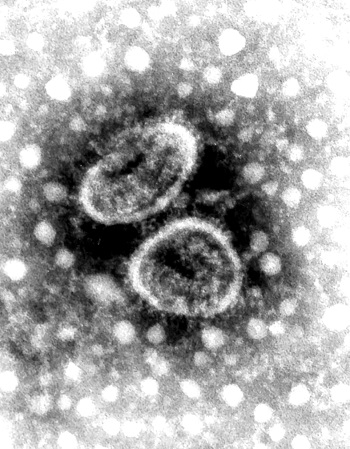Torovirus - Laboratory diagnosis, Treatment, Prevention, Control
Laboratory diagnosis of Torovirus
The laboratory diagnosis of Torovirus are as follows:
Specimen
stool
serum
Culture, isolation
Berne virus was originally isolated and then cultured in vitro using several types of equine (horse) cells, with a subsequent manifestation of cytopathic effects
The turkey torovirus can be isolated in turkey embryos via the amniotic route of inoculation
Microscopy
Torovirus particles also can be directly visualized in feces or intestinal contents, using electron microscopy.

Fig: Torovirus electron microscopy (Source: Wikipedia)
Serological tests
Serum neutralization, ELISA, and haemagglutination – inhibition assays (for bovine or porcine Torovirus only) are available, using bovine torovirus
Molecular tests
Torovirus can be detected in the faces or intestinal contents of swine using the molecular diagnosis of RT-PCR.
Treatment of Torovirus
There is no specific treatment for Torovirus. However, animals suffering from torovirus infection can be treated symptomatically by fluid therapy to prevent dehydration
Antibiotics may be used to check the secondary bacterial infections
Prevention, Control of Torovirus
The prevention, control of Torovirus are as follows:
No vaccine is available because of the variable role of toroviruses as pathogens.
Colostrum-containing antibodies against BtoV can be used for prophylaxis.
In animal shelters, waste should be properly handled and disinfected.
infected animals should be isolated.